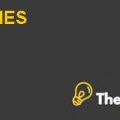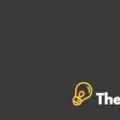
Harimann International Case Solution
Decision Problem
Dhawan has to decide as per the analysis what should be done regarding the order. Whether the order should be entertained to earn high tax exempt profit with many other incentives, or decline the order in order to be at safe side which can save the company from loss. This decision also affects the relationship of Harimann with the Pioneer asPioneer is one of major customers and large importer of Japan. There were several other alternatives and outcomes, which need to be considered and evaluated, in order to contribute to the final decision making.
Decision Alternatives
Sunk Cost
The sunk cost can be defined as the cost that is incurred in an expectation of something, in which the cost can be redeemed or utilized in some way. However, afterwards it becomes certain that the cost will be irrecoverable. Such cost in business is called sunk cost, the expense that is irrecoverable. In business decision making, the sunk cost is considered as irrelevant as it doesn’t affect the decision in any way and has no effect on the future profit or cost that the decision will yield. (Nielsen, n.d)
In this case, Dhawan has bought the raw materials, which include fabrics, zippers and lining, in an anticipation of material shortage. These raw materials were bought to complete Pioneer’s order ahead of any decision made for the acceptance or refusal of order. The cost of the raw materials was 188400 Indian rupees. This cost is sunk cost for Harimann international. However, 90% of the cost can be recovered and this implies that only 10% of the cost is actual sunk cost.
Thus, this sunk cost has become irrelevant in the decision making whether to accept or refuse the order.
Overview
Dhawan has to make the decision whether to accept the order and secure high profits, which is also tax exempted and with many incentives. Moreover, this will also solidify the relation between Harimann and Pioneer. On the other hand, there are many uncertainties and it is estimated that there is 20% probability that the shipping date will be missed. This situation induces Dhawan to think of the consequences of not meeting the order, and eventually think whether it is reasonable to decline the order.
Possibility 1-Acceptance of order (without delay)
In this situation, it is certain that the order is accepted and the order ismet without any delay. In this situation, Dhawan will fetch a total of 315,238 Indian rupees including an average rate of 57%,281,238 of government incentives (10% duty drawback, 15% cash back and replenish license with face value of 40% of total receipts). However, it is estimated that there is 20% possibility that the order will not complete at the specified date and will be delayed.
Possibility 2-Refusal of Order
There were many uncertainties which caused Dhawan to think of refusing the order as it is highly difficult to meet the shipment deadline.In addition, embroider has declined to confirm the scheduled task which also placed many questions whether the order will be completed in time. The outcome of declining the order will be the loss of sunk cost for Dhawan, which is insignificant. However, this also results in loss of contribution margin and incentives, which could have been achieved by completing the order. Another aspect is that the loss which could have been incurred by the delay in the shipment is saved if the order is declined.
Possibility 3-Acceptance of Order (with delay, 50%)
If the order is accepted but a delay occurs, then there is the expectation that Pioneer will follow the industry’s rules and norms in the payment of the order. It is the industry norm to pay at reduced prices as compared to the original contract if the order is delivered late. Thus, Dhawan estimated that it is probable that Pioneer would pay about 50% of the original receipt. Therefore,in this situation Dhawan will only receive 246,700 in revenues, as a result the total contribution will be -212,700 which will ultimately result in loss of 72,081 after adjusting the incentives by the government....................
This is just a sample partial case solution. Please place the order on the website to order your own originally done case solution.











